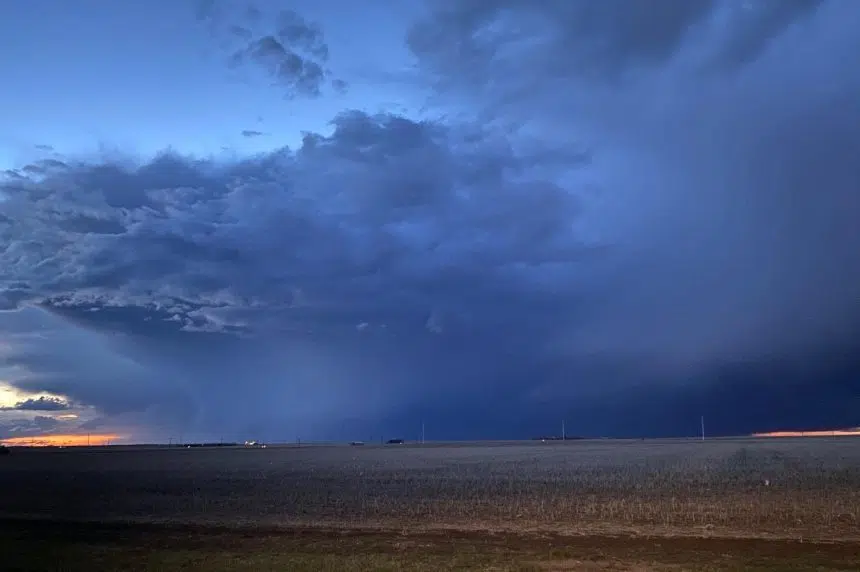Rain continues to put a damper on seeding in Saskatchewan.
According to the weekly crop report from the province’s Ministry of Agriculture, 33 per cent of the 2022 crop is in the ground, significantly behind the five-year average of 53 per cent for this time of year.
The Ministry of Agriculture said seeding is well behind in eastern areas of the province, with just 17 per cent complete in the southeast, 13 per cent done in the east-central region and eight per cent of crops in the ground in the northeast.
On the other side of the province, 60 per cent of the crop has been seeded in the southwest region, the west-central region is 53 per cent complete and the northwest is 35 per cent done.
“Producers with overly saturated fields are starting to heavy harrow in attempts to dry their soils out faster,” the crop report said. “Producers who can are seeding as fast as possible between rains to avoid any further delays.”
Dallas Jonassen farms near Redvers, a town about 40 kilometres east of Carlyle.
He has been struggling to deal with the high moisture levels and wishes he could get out and seed as soon as possible.
“It totally caught us off guard here. I wasn’t expecting this at all,” he said.
He’s worried the late seeding could lead to his crops suffering from frost in the fall.
With the cost of everything these days, that’s not a loss that’s easy to absorb.
“We spend a tremendous pile of money to grow canola … with the fertilizer and the seed. If you’re renting, with what some of these guys are paying for rent … you’re looking at roughly $60,000 an acre to seed a quarter of canola,” he explained.
“In a year or two, you can go from good financial standings in farming to being broke … Some of these young guys that are in debt up to their eyeballs … there is a lot of stress out there. I can survive a year or two, but some of these young guys, if they don’t grow a crop, they’re done.”
Provincewide, 59 per cent of lentils, 57 per cent of field peas, 51 per cent of durum, 29 per cent of spring wheat and 27 per cent of barley have been seeded to date.
The recent rainstorms — one of which dumped more than 120 millimetres in the Estevan area over two days, according to the report — have improved topsoil moisture conditions in the province.
Cropland topsoil moisture is rated as 12 per cent surplus, 56 per cent adequate, 20 per cent short and 12 per cent very short. Hay and pastureland topsoil moisture is rated as four per cent surplus, 56 per cent adequate, 24 per cent short and 16 per cent very short.
“Pasturelands that have received moisture all spring are beginning to see good recovery from the 2021 drought and their carrying capacity of cattle is increasing,” the report said.
— With files from 980 CJME’s Dom Lucyk







